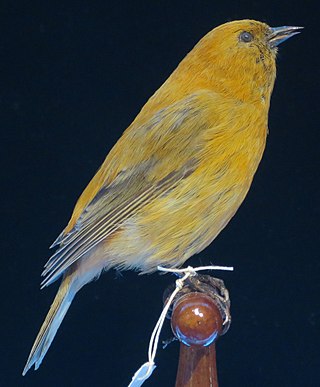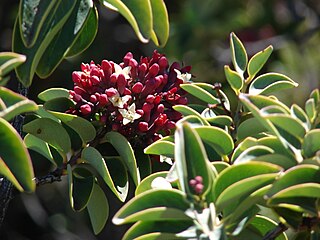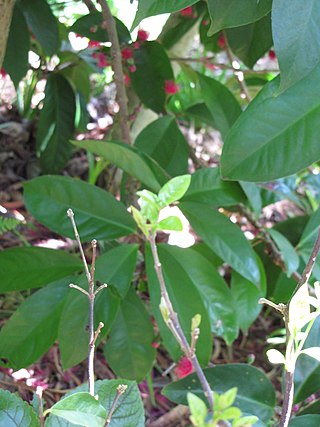
The island of Maui is the second-largest island of the state of Hawaii at 727.2 square miles (1,883 km2), and the 17th-largest island in the United States. Maui is the largest of Maui County's four islands, which also include Molokaʻi, Lānaʻi, and unpopulated Kahoʻolawe. In 2020, Maui had a population of 168,307, the third-highest of the Hawaiian Islands, behind Oʻahu and Hawaiʻi Island. Kahului is the largest census-designated place (CDP) on the island, with a population of 28,219 as of 2020, and the island's commercial and financial hub. Wailuku is the seat of Maui County and is the third-largest CDP as of 2010. Other significant populated areas include Kīhei, Lāhainā, and Upcountry Maui.

Haleakalā, or the East Maui Volcano, is a massive, active shield volcano that forms more than 75% of the Hawaiian Island of Maui. The western 25% of the island is formed by another volcano, Mauna Kahalawai, also referred to as the West Maui Mountains.

Haleakalā National Park is an American national park located on the island of Maui in the state of Hawaii. Named after Haleakalā, a dormant volcano within its boundaries, the park covers an area of 33,265 acres, of which 24,719 acres is a wilderness area. The land was designated a national park in 1976 and its boundaries expanded in 2005.

Argyroxiphium is a small genus of plants in the family Asteraceae. Its members are known by the common names silversword or greensword due to their long, narrow leaves and the silvery hairs on some species. The silverswords belong to a larger radiation of over 50 species, including the physically different genera Dubautia and Wilkesia. This grouping is often referred to as the silversword alliance. Botanist P. H. Raven referred to this radiation as "the best example of adaptive radiation in plants".

Argyroxiphium sandwicense subsp. macrocephalum, the east Maui silversword or Haleakala silversword, is a rare plant, part of the family Asteraceae. The silversword in general is referred to as ʻāhinahina in Hawaiian.

The poʻo-uli or black-faced honeycreeper is an extinct species of passerine bird that was endemic to the island of Maui in Hawaiʻi. It is considered to be a member of the Hawaiian honeycreepers, and is the only member of its genus Melamprosops. It had a black head, brown upper parts and pale gray underparts. This bird inhabited only the wetter, easternmost side of Maui, where it had rapidly decreased in numbers. With extinction threatening, efforts were made to capture birds to enable them to breed in captivity. These efforts were unsuccessful; in 2004, only two known birds remained, and since then, no further birds have been sighted. A 2018 study recommended declaring the species extinct, citing bird population decline patterns and the lack of any confirmed sightings since 2004, and in 2019, the species was declared extinct.

Argyroxiphium sandwicense, the Hawaiʻi silversword, or hinahina is a species of silversword. It is endemic to Hawaii. The two subspecies are separated by geography. Both subspecies are rare, threatened and federally protected.

Loxops is a Hawaiian honeycreeper genus in the finch family, Fringillidae. Most of them are commonly known as ʻakepa.

The ʻākohekohe, or crested honeycreeper, is a species of Hawaiian honeycreeper. It is endemic to the island of Maui in Hawaiʻi. The ʻākohekohe is susceptible to mosquito‐transmitted avian malaria and only breeds in high‐elevation wet forests.

The Maui parrotbill or kiwikiu is a species of Hawaiian honeycreeper endemic to the island of Maui in Hawaii. It can only be found in 50 square kilometres (19 sq mi) of mesic and wet forests at 1,200–2,150 metres (3,940–7,050 ft) on the windward slopes of Haleakalā. This species is critically endangered, with an estimated population in 2016 of 250-540 individuals, but more recent estimates of less than 150 individuals. Fossil evidence indicates that the bird could at one time be seen in dry forests at elevations as low as 200–300 metres (660–980 ft), as well as on the island of Molokaʻi.

Hibiscadelphus wilderianus, also known as the Maui hau kuahiwi is an extinct species of flowering plant in the family Malvaceae that was endemic to Hawaii.
Melicope balloui, also called Ballou's melicope or rock pelea, is a species of plant in the family Rutaceae. It is endemic to the Hawaiian Islands. It is threatened by habitat loss. Like other Hawaiian Melicope, this species is known as alani.

Santalum haleakalae, known as Haleakala sandalwood or ʻIliahi in Hawaiian, is a species of flowering tree in the sandalwood family, that is endemic to the islands of Maui, Lanai, and Molokai in the Hawaiian Islands, part of the United States. It grows in subalpine shrublands at elevations of 1,900 to 2,700 m, especially on the slopes of Haleakalā.

Wikstroemia bicornuta, the alpine false ohelo, is a species of flowering plant in the mezereon family, Thymelaeaceae, that is endemic to Hawaii. It inhabits mixed mesic and wet forests at elevations of 900–1,050 m (2,950–3,440 ft) on the islands of Lānaʻi and Maui. It is threatened by habitat loss.
Wikstroemia skottsbergiana, also called Skottsberg's false ohelo and Skottsberg's wikstroemia, is a species of flowering plant in the family Thymelaeaceae. It is endemic to the island of Kauaʻi in Hawaiʻi, but its range has been severely reduced due to habitat loss. Only one small population of 30 individuals is known, but access to this location has not been permitted to conservationists since 2000, and the habitat surrounding this area has become heavily degraded over the years, raising fears that it may be extinct.
Clermontia samuelii is a rare species of flowering plant in the bellflower family known by the common name Hana clermontia. It is one of several Hawaiian lobelioids in genus Clermontia that are known as `oha wai. This plant is endemic to Maui, where there are fewer than 250 mature specimens remaining. This is a federally listed endangered species of the United States.
Cyanea glabra is a rare species of flowering plant in the family Campanulaceae known by the common name smooth cyanea. It is endemic to Maui, where there are twelve plants remaining in the wild. It was federally listed as an endangered species of the United States with nine other Maui Nui endemics in 1999. Like other Cyanea it is known as haha in Hawaiian.

Geranium multiflorum is a rare species of geranium known by the common names manyflower geranium, or manyflowered cranesbill. It is endemic to Hawaii, where it is known only from Haleakalā, the main volcano on the island of Maui. It was federally listed as an endangered species in 1992. Like other Hawaiian geraniums, this plant is known as hinahina and nohoanu.

Schiedea haleakalensis is a rare species of flowering plant in the family Caryophyllaceae known by the common name Haleakalā schiedea. It is endemic to Hawaii, where it is known only from Haleakalā National Park on the island of Maui. It is threatened by the degradation of its habitat. It was federally listed as an endangered species of the United States in 1992. Its native habitat includes dry subalpine cliffs with native shrubs.

Schiedea hookeri is a rare species of flowering plant in the family Caryophyllaceae known by the common names Hooker's schiedea and sprawling schiedea. It is endemic to Hawaii, where it is known only from the island of Oahu. It is thought to have been extirpated from Haleakalā on Maui. It is threatened by the degradation and destruction of its habitat. It was federally listed as an endangered species of the United States in 1996.
















